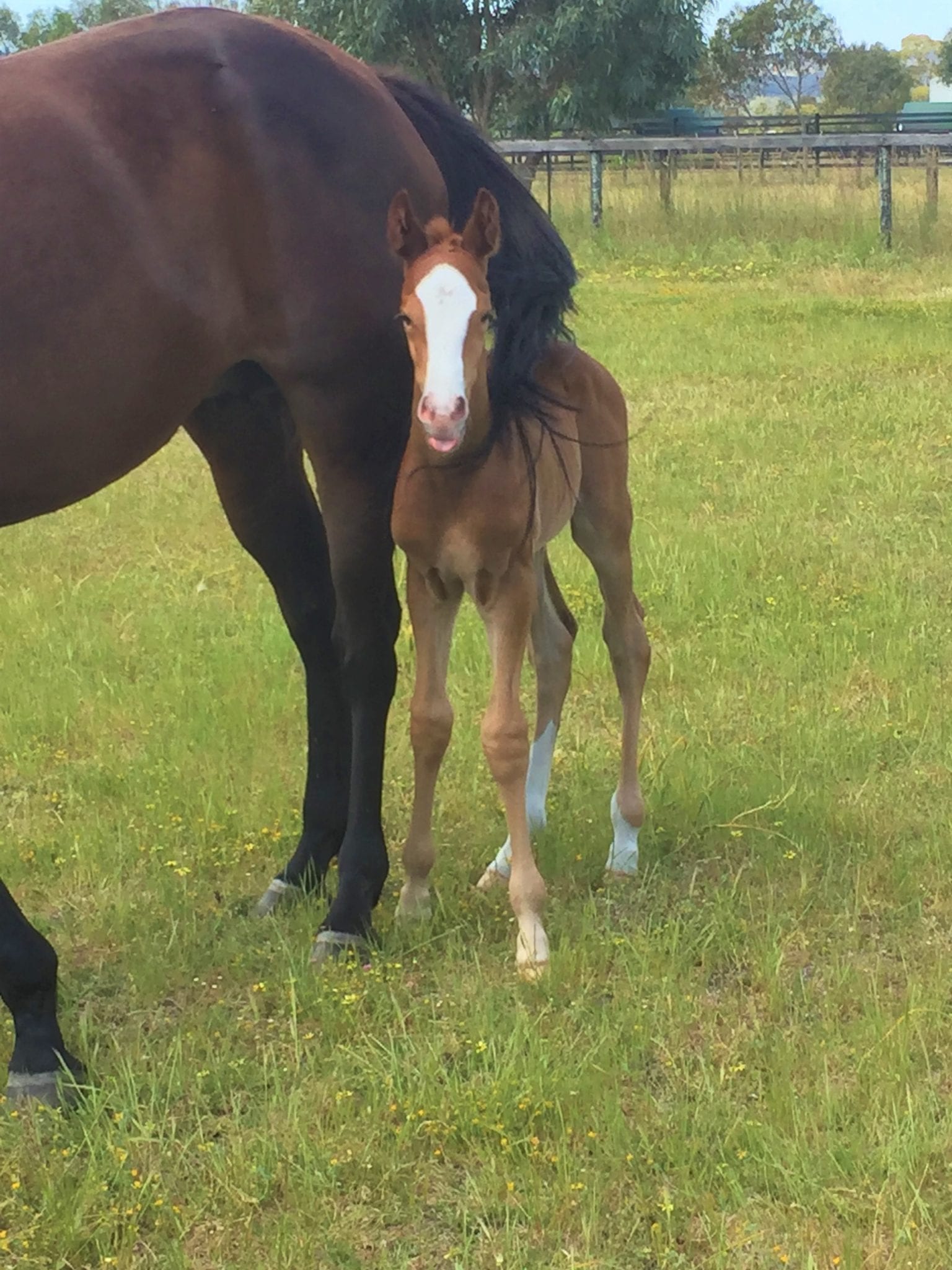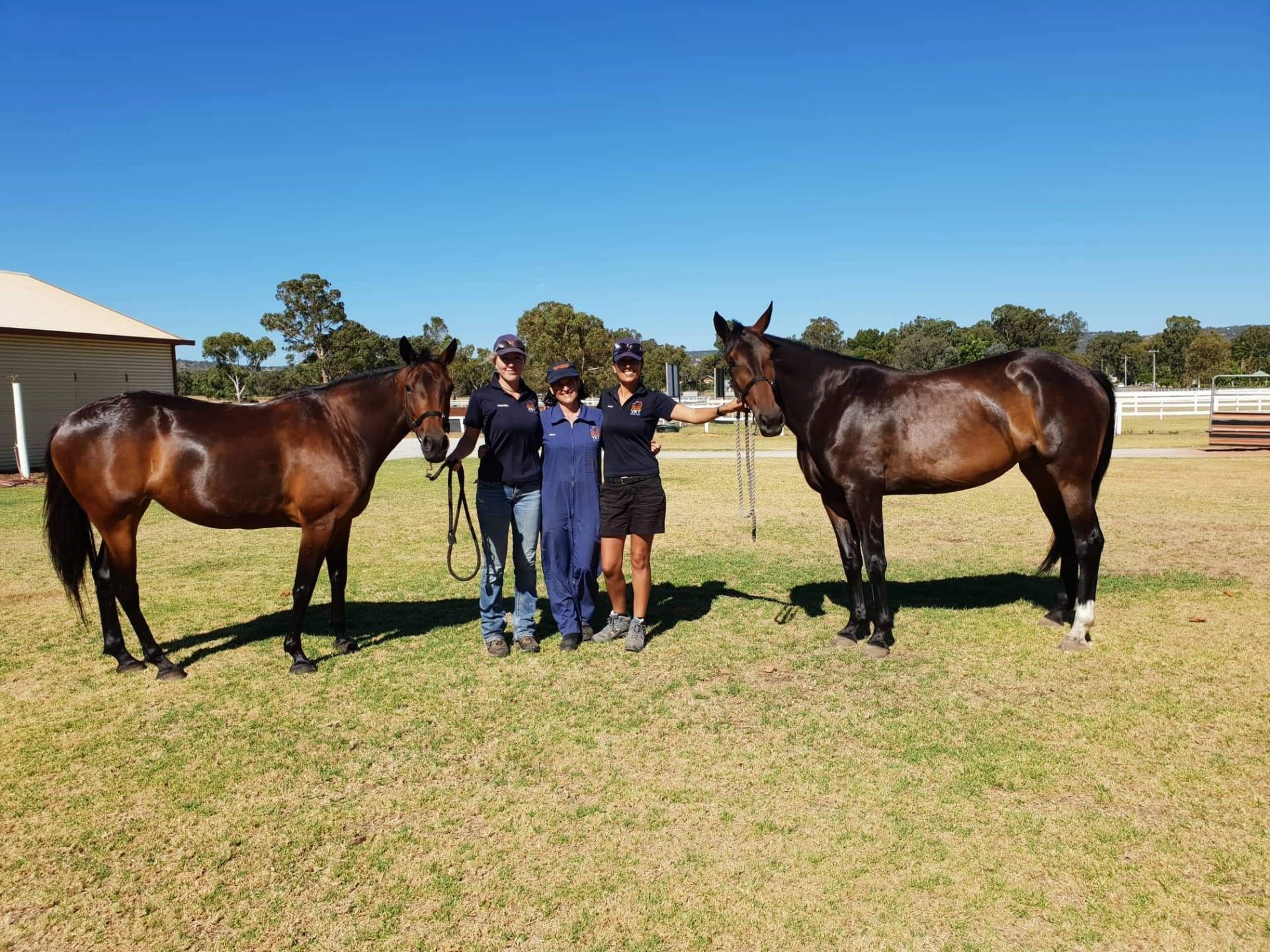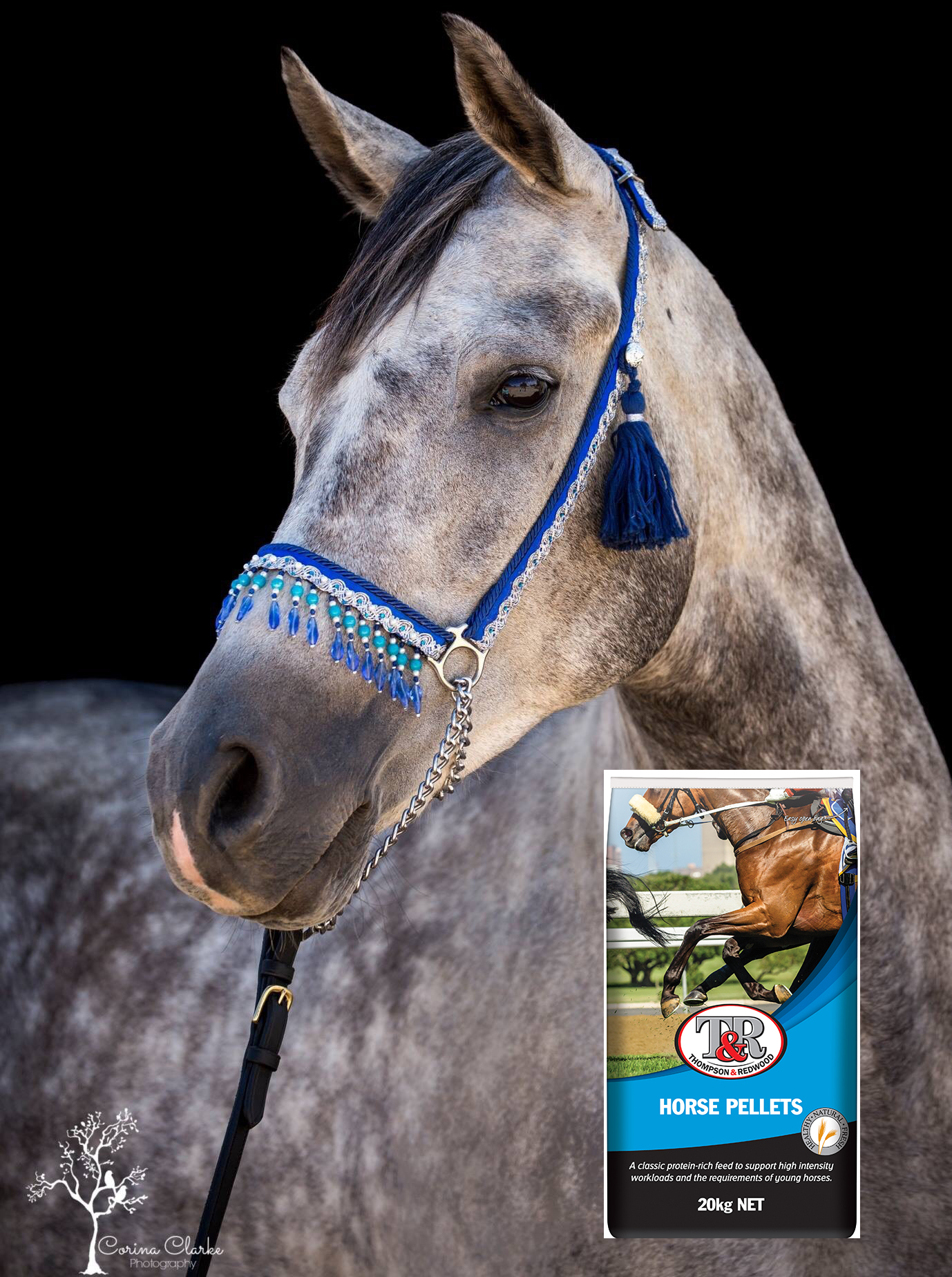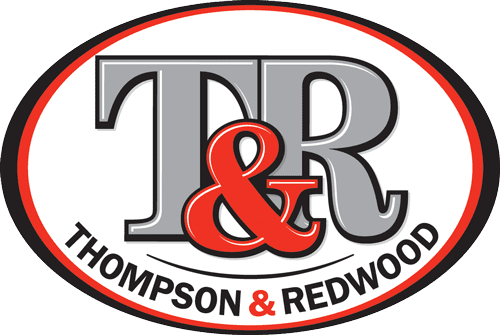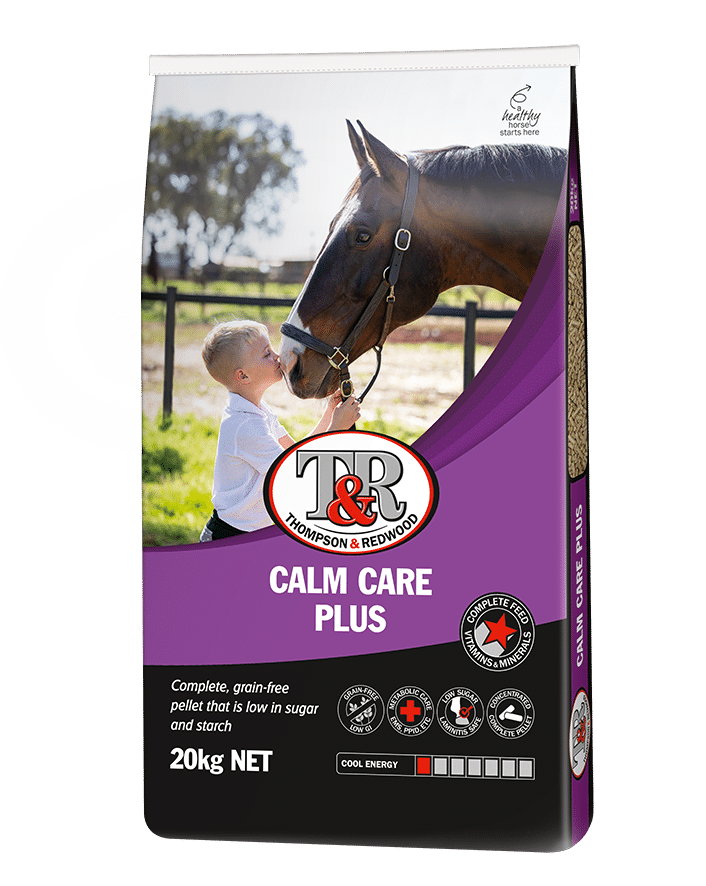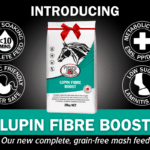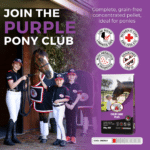
From grass roots to high performance, we have an equine feed to suit
A feed for (almost) every animal on the farm
Quality
Ruminant feeds to support productivity
We’re passionate about poultry
superior feed for broodmares, young stock & commercial studs
with added pre & probiotics
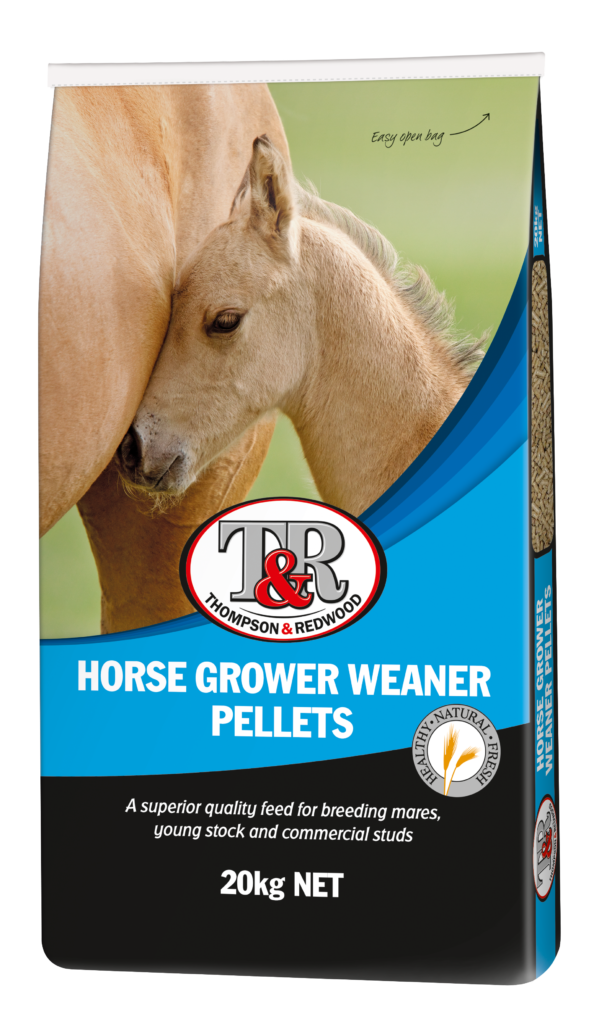
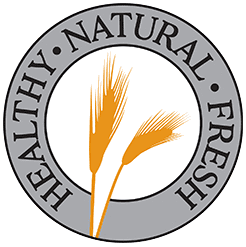
Making healthy, natural and fresh stock feed since 1985
Thompson & Redwood makes affordable and nutritionally balanced stock feed for the horse and agricultural
industries. Our recipes never change and are milled daily from Western Australian grain so you know what
you’re feeding is healthy, natural and fresh.
What's your
horse feeding challenge?
- Fizzy horse?
- Poor keeper?
- At risk of laminitis?
Let our veterinary and nutrition team support you and your horse with our carefully formulated complete horse feeds.
Find the feed most suited to your horse or pony.
What's your
horse feeding challenge?
- Fizzy horse?
- Poor keeper?
- At risk of laminitis?
Let our veterinary team support you and your horse with our carefully formulated complete horse feeds.
Find the feed most suited to your horse or pony.
#factfriday - did you know that the lower portion of a horse`s stomach has a pH 1-2, which is nearly as low as battery acid? Battery acid has a pH of around 0.8 and is one of the most corrosive substances ⚠️
The horse`s stomach is divided into main regions, the non-glandular region and the glandular region.
The non-glandular region at the top has a nearly neutral pH of between 6-7. The Glandular region is lined with glandular mucosa, and is where the gastric juices like hydrochloric acid and enzymes sit with a pH of between 1-2. The glandular portion is designed to withstand this pH, the non-glandular portion is not!
This is why horses can be susceptible to ulcers in the non-glandular region as a result of acid-splash - and an important reason why we shouldn`t work horses on an empty stomach. Providing some quality lucerne hay or forage immediately before riding can help to create a `cap` that sits on top of the acid and prevents splashing.
#horses #ulcers #horsehealth #horsefacts #horsetips #horseulcers #horseguthealth
May 2

Two Galloways mares are Leeara Park`s newest home-bred stars, so what`s their breeding motto?
"We find that the greatest asset as a breeder is to understand that no horse is perfect, and being able to identify these weaknesses, gives you the basis of choosing a stallion suitable to compliment their needs.
We are exceptionally critical of each of our mares as ultimately we are looking to improve the offspring out of each of them and find the perfect stallion to match."
Read more >>
https://thompsonandredwood.com.au/the-ins-and-outs-of-breeding-horses
May 1

PROTEIN - What does it do for your horse and why is quality important? Proteins are essential macronutrients that have many critical roles in the body and are vital for horses and ponies of all ages - around 15% of their overall body mass is made up of proteins! Protein is often misunderstood, but it is critical for horse health, function and performance. Some key roles of protein include:
✅ Tissue growth and repair
✅ Providing structure
✅ Nutrient transport around the body
✅ Immune function
✅ Regulating metabolic function
Horses get protein from their diets, and there is protein present at varying levels in their grass, hay, and feeds. However, not all protein is created equal, and each feed ingredient will have a different quantity AND quality. For example, grass might have a good amount of crude protein, but that protein quality could be low.
➡️ What determines protein quality?
Proteins are made up of amino acids which are like building blocks. The quality of a protein is determined by the type and number of essential amino acids that it contains and how digestible they are. Essential amino acids cannot be made or synthesised by the horse so must be provided through the diet. For a certain protein to be built, the correct amino acids must be supplied.
✅ A high-quality protein source contains the ideal ratio of essential amino acids which are easily digestible. This means that the body can then use most of those amino acids in protein synthesis.
❌ Low-quality proteins don`t offer as many essential amino acids, so there are a lot left over for the body to excrete.
When you look at your horse`s feed, you need to take into consideration the QUANTITY and QUALITY of the proteins in their diet. The amount of protein needed varies depending on a horses age, life stage and workload. Broodmares in late gestation and lactation, growing horses and performance horses have a higher protein requirement than a mature horse in light work.
.
.
.
#protein #horsenutrition #horsefeed #horses #proteinforhorses
Apr 28

35 years old, happy and healthy - Happy Retirement Rusty!
Rusty has taught so many kids to ride, and is now enjoying his days of retirement with Horse Cubes for Seniors and Lupin Fibre Cubes together as a nutritious mash.
#horsecubesforseniors #lupinfibreboost #oldpony #horsefeed #fuelledbytandr
Apr 22

ULCERS - Feeding strategies for prevention and care ️
Did you know that one Western Australian study found that 53% of horses had ulcers? Ulcers can lead to pain, reduced appetite, decreased performance and more. Here are some important feeding strategies that can help with prevention and care:
✅Saliva helps to buffer the acid and protect the gut, and the more they chew, the more saliva they produce! Offer plenty of ad-lib forage and fibre, day and night to keep them producing saliva and their gut functioning. 💡𝗗𝗶𝗱 𝘆𝗼𝘂 𝗸𝗻𝗼𝘄: Horses only produce saliva when chewing.
✅ Provide ad lib forage and try to keep time without available feed to a minimum. If you are worried about weight gain, limit the quality of roughage, not quantity.
✅ Look for feeds that are high in fermentable fibres and low in starches and sugars. Our Lupin Fibre Boost and Lupin Fibre Cubes are both very low in starch and high in fermentable fibres so suitable for horses with ulcers.
✅ Split your hard feeds or concentrates into as many small feeds per day as you can. More smaller feeds are better for their stomach than few large feeds.
✅ Ensure they are always well hydrated.
✅ Avoid riding on an empty stomach. Offer a small feed of lucerne hay or chaff immediately prior to riding to help prevent acid splash.
✅ Provide lots of turnout time and grazing if you can – turning your horse out helps to decrease stress, especially if they have other horses around them. Grazing also helps horses to keep producing saliva which helps to buffer the stomach.
If you suspect your horse has ulcers, please seek veterinary advice. The sooner you seek help, and your horse gets treatment, the sooner your horse can return to optimum health.
Looking for an ulcer-safe feed? Lupin Fibre Boost, Lupin Fibre Cubes and Calm Care Plus are all low in sugar and starch and safe for horses with ulcers.
#tiptuesday #ulcers #horseulcers #ulcercare #lowsugarandstarch #horsefeed #horsecare
Apr 21

Meet Milan and Hashie...you might recognise them from our Lupin Fibre Boost bag! Well they are on their way back across the Nullarbor after a successful Grand Nationals, and Hashie is staying hydrated with a nice sloppy Lupin Fibre Boost mash.
#lupinfibreboost #fuelledbytandr #horsefeed
Apr 17

HOOVES - How does feeding influence hoof health?
No hoof no horse! Hoof health can be influenced by 3 key things – GENETICS, ENVIRONMENT and NUTRITION. What you feed can make all the difference to keeping your horse`s hooves strong and functioning, and here are a few reasons why:
✅ Balance is key! A balanced diet that provides the right levels and ratios of amino acids, fatty acids, vitamins and minerals for meeting their daily requirements.
✅ Protein – hooves are mainly made up of a protein called keratin, and proteins are made up of amino acids. Methionine is an amino acid that is believed to be important for hoof quality, but balance is key.
✅ Quality Fibre - when bacteria in the hindgut ferment fibre, they produce essential B vitamins (including biotin) and vitamin K which are known to benefit hoof and hair growth and structure.
✅ Biotin – biotin has been widely researched for its influence on hoof growth and is believed to influence hoof integrity. Supplementation of biotin alone though isn’t enough for hoof health; it must be part of a balanced diet.
✅ Zinc – zinc influences the keratinisation of the hoof – what does that mean?? It’s the process by which the cells become keratin, and are ready to form a strong, protective hoof. Zinc is essential in this process.
✅ Fats – fats in the diet can be a help to your horse’s hooves. They can help to form a barrier that protects the hoof from fungi and bacteria.
✅ Calcium and Phosphorous – Calcium helps with cell attachment and cohesion in the hoof which is vital for hoof strength. It must be feed in the correct ratio with Phosphorous though to avoid issues with calcium absorption.
✅ Selenium and Vitamin E - these antioxidants (prevent cell deterioration) help to protect the cell membranes. A key sign of selenium deficiency is actually cracked hooves. But like all the others, balance is key to avoid selenium toxicity.
If you are worried about your horse`s hoof health, make sure their diet is balanced, and they are receiving their daily nutritional requirements. Need help? Send us a message, we`re happy to assist.
Apr 14

Calm Care Plus | Low Sugar & Starch | Complete Feed ... See MoreSee Less

Calm Care Plus | Low Sugar & Starch | Complete Feed
thompsonandredwood.com.au
Calm Care Plus is a complete, concentrated and grain-free pellet that is suitable for horses across a range of workloads and is laminitis safe- likes love 5
- Shares: 0
- Comments: 0
0 CommentsComment on Facebook
#factfriday - did you know that the lower portion of a horse's stomach has a pH 1-2, which is nearly as low as battery acid? Battery acid has a pH of around 0.8 and is one of the most corrosive substances ⚠️
The horse's stomach is divided into main regions, the non-glandular region and the glandular region.
The non-glandular region at the top has a nearly neutral pH of between 6-7. The Glandular region is lined with glandular mucosa, and is where the gastric juices like hydrochloric acid and enzymes sit with a pH of between 1-2. The glandular portion is designed to withstand this pH, the non-glandular portion is not!
This is why horses can be susceptible to ulcers in the non-glandular region as a result of acid-splash - and an important reason why we shouldn't work horses on an empty stomach. Providing some quality lucerne hay or forage immediately before riding can help to create a 'cap' that sits on top of the acid and prevents splashing.
#horses #ulcers #horsehealth #horsefacts #horsetips #horseulcers #horseguthealth
... See MoreSee Less

0 CommentsComment on Facebook
Two Galloways mares are Leeara Park's newest home-bred stars, so what's their breeding motto?
"We find that the greatest asset as a breeder is to understand that no horse is perfect, and being able to identify these weaknesses, gives you the basis of choosing a stallion suitable to compliment their needs.
We are exceptionally critical of each of our mares as ultimately we are looking to improve the offspring out of each of them and find the perfect stallion to match."
Read more >>
thompsonandredwood.com.au/the-ins-and-outs-of-breeding-horses
... See MoreSee Less

1 CommentsComment on Facebook
PROTEIN - What does it do for your horse and why is quality important? Proteins are essential macronutrients that have many critical roles in the body and are vital for horses and ponies of all ages - around 15% of their overall body mass is made up of proteins! Protein is often misunderstood, but it is critical for horse health, function and performance. Some key roles of protein include:
✅ Tissue growth and repair
✅ Providing structure
✅ Nutrient transport around the body
✅ Immune function
✅ Regulating metabolic function
Horses get protein from their diets, and there is protein present at varying levels in their grass, hay, and feeds. However, not all protein is created equal, and each feed ingredient will have a different quantity AND quality. For example, grass might have a good amount of crude protein, but that protein quality could be low.
➡️ What determines protein quality?
Proteins are made up of amino acids which are like building blocks. The quality of a protein is determined by the type and number of essential amino acids that it contains and how digestible they are. Essential amino acids cannot be made or synthesised by the horse so must be provided through the diet. For a certain protein to be built, the correct amino acids must be supplied.
✅ A high-quality protein source contains the ideal ratio of essential amino acids which are easily digestible. This means that the body can then use most of those amino acids in protein synthesis.
❌ Low-quality proteins don't offer as many essential amino acids, so there are a lot left over for the body to excrete.
When you look at your horse's feed, you need to take into consideration the QUANTITY and QUALITY of the proteins in their diet. The amount of protein needed varies depending on a horses age, life stage and workload. Broodmares in late gestation and lactation, growing horses and performance horses have a higher protein requirement than a mature horse in light work.
.
.
.
#protein #horsenutrition #horsefeed #horses #proteinforhorses
... See MoreSee Less

0 CommentsComment on Facebook
"They shall grow not old, as we that are left grow old; Age shall not weary them, nor the years condemn. We will remember them."
Each ANZAC Day we share stories about the animals that have served Australia. Today we wanted to share more of the story of Simpson and his donkey, and more about 'Duffy', one of the hard-working little donkeys that has become such a symbol of the ANZAC memory.
John Simpson Kirkpatrick landed at ANZAC cove as a member of the 3rd Field Ambulance. He was instructed to retrieve wounded soldiers from the front line and did so with enthusiasm. He enlisted the help of a donkey, known for their work ethic and sure-footedness, to ferry the wounded men back to the beach.
Simpson actually used 2 donkeys (some sources say maybe a 3rd) which had likely been brought ashore when the ANZAC's landed to help carry water. It's believed he was the first Australian stretcher bearer to use a donkey to carry the wounded, using it for the first time on the 26th, the day after landing.
The first donkey was named 'Abdul' or 'Murphy', and the second donkey which is pictured in this photo was named 'Duffy'. Accounts said that Simpson would crawl on his belly and pull the wounded back to the donkey, before they wound their way back down the rough, hilly terrain to the beach, often while under fire. Simpson and Duffy worked in conjunction with stretcher bearers on foot, and reports say that they were able to do more runs in a day over the rough terrain.
Simpson was shot and killed on one of these missions after only 3 weeks at Gallipoli, and some stories say that Duffy knew his job so well that he continued on to take his wounded cargo back to the beach.
Simpson's story has been one surrounded by a lot of myth, legend and embellishment. His legend grew after his death, and his story was used for a range of propaganda to encourage enlistment. What is for sure though is that his bravery is undisputed and was representative of the incredible work of the Australian stretcher bearers who worked with great courage and upheld the ANZAC spirit.
And when it comes to Duffy, Murphy, Abdul and all the other donkeys that helped our soldiers, whether carrying wounded men or resources, their natural strength, sure-footedness and work ethic was invaluable.
Lest We Forget.
SOURCE: Thanks to the Australian War Memorial for the photo. You can read more about Simpson and his donkeys on their website.
... See MoreSee Less

0 CommentsComment on Facebook
